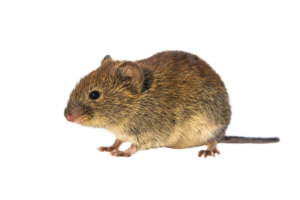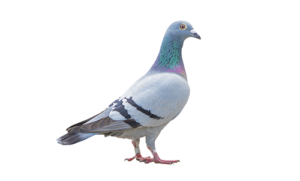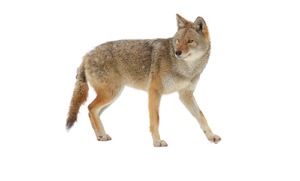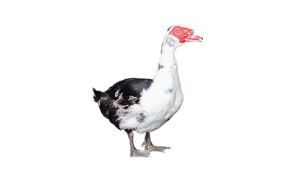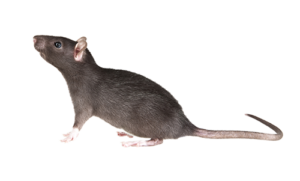A relative of the domesticated dog, foxes are found throughout the world on every continent, except Antarctica. The most common foxes in the United States are the red fox and gray fox. These are very cunning and resourceful creatures. Foxes are able to adapt to just about any habitat they can find, even living among humans with lots of activity. In fact, living where there is human activity, generally means there is easy access to food, water, and shelter. Because foxes are not afraid of humans, it might be necessary to seek help from a fox removal specialist when the animal becomes a nuisance.
Habitats
Gray foxes like to live in deciduous forests and rocky woodlands. While red foxes prefer to live in a combination of forested areas and open meadows. Due to the readily available amount of food, both like to live near farmlands. Foxes are also known to build their dens in the crawl spaces under decks, porches, and sheds. They generally stay out of a home, unless they are hungry and detect food is available inside. Most fox dens have just one entry and one exit point. Inside there is a system of multiple dens connected by a 30-foot tunnel.
Appearance
Foxes range in color from yellowish red to reddish brown. Gray foxes often have red spots, which make it difficult to distinguish between the two. Gray foxes have black tipped tails and red foxes have white tipped tails. Both weigh about six to 15 pounds, and in very rare cases can weigh up to 30 pounds. All foxes are generally two to three feet in length, including the tail. Foxes have very characteristic faces with pointed muzzles, almond shaped eyes, and large ears.
Behavior
Foxes are very social creatures, living in family groups. Very rarely, do some prefer to live a more solitary, nomadic life. These animals use scent markings to communicate with others and to mark empty food locations. Instead of eating food where they found it, foxes will often take the food to a new location and bury it. The fox never takes food back to the den because it does not want the food to attract predators or other animals. In addition to using scent markings, foxes also communicate using body language. For example, when threatened, the fox arches its back, exposes its teeth, and takes a sideways stance. This is a warning to back off. Aggressive foxes attack head on with tail lifted and ears back.
Diet
Foxes are omnivorous and are very good hunters. They prefer to hunt small mammals, snakes, birds, and amphibians. Hunting skills are taught early in a fox’s life as they play with siblings. They are very opportunistic creatures and will never pass up an easy meal. They also eat berries, when available, which often become a large part of a fox’s diet.
Dangers
Foxes pose a minimal threat to humans. They do invade properties and prey on domesticated birds. Should a fox come in contact with a human or domesticated animal, there is the danger of the transfer of several diseases, including rabies, tularemia, and canine distemper. Rabid foxes are a threat to both humans and domesticated dogs. A mother fox can be extremely protective of her young and will do anything necessary to protect her litter. In general, it is best to stay away from a wild fox and when it becomes a danger to humans and pets, call for a fox removal specialist to help.
Damage
When searching for food or building their den, foxes can cause a large amount of damage to homes and yards. They dig up gardens for food and though rarely enter a home, break through screens to get to food. Foxes dig under homes, sheds, and porches to build a den. This can damage the support beams and foundation of structures. Hiring a fox removal specialist is necessary when a fox starts causing damage to the home’s structure.
Nuisance
In search of food, foxes can become a nuisance. These cunning creatures raid poultry farms, hen houses, rabbit farms, and game farms in search of food. They also target smaller animals, such as dogs, cats, and birds. Homeowners with outdoor chicken coops and rabbit hutches are easy targets. These animals need to be properly secured to prevent a fox attack. Small dogs and cats could also become a target of a hungry fox. Keep a close eye on pets when outside. If no food is readily available, foxes can destroy yards and rip up trash in search of food.
Prevention
To prevent foxes from invading a property, it is necessary to remove anything that may attract them in the first place. This includes eliminating any food, water, and shelter options a property might offer a fox. Keep cats indoors at night, protect domesticated birds, and supervise small dogs at all times when outside. A fence sometimes works, but is not always effective. Getting a large dog may scare off the fox. Seal off any crawl spaces or areas where a fox might dig to build its den. Fox removal specialists will help with setting of prevention measures against future fox invasions.
Removal
The trapping of foxes is regulated by state and local laws. It is required to have a certified wildlife specialist with the knowledge and tools to rid the property of foxes and remove the animals. The fox removal specialist will safely, properly, and humanely trap and remove the animal.
Hiring Help
Foxes can become very dangerous, especially if they feel threatened. Do not attempt to handle or capture a fox alone. Professional wildlife specialists know the habits of foxes and how to properly handle. Upon arrival, the technician will assess the situation, come up with a removal plan, remove the animal, and help homeowners take action to prevent other foxes from becoming a nuisance.
For the most part, foxes prefer to stay away from humans. However, the temptation of food, water, and shelter is what attracts foxes to areas where humans reside. Calling in a fox removal specialist may be necessary, especially when a fox enters a yard and becomes a nuisance.


